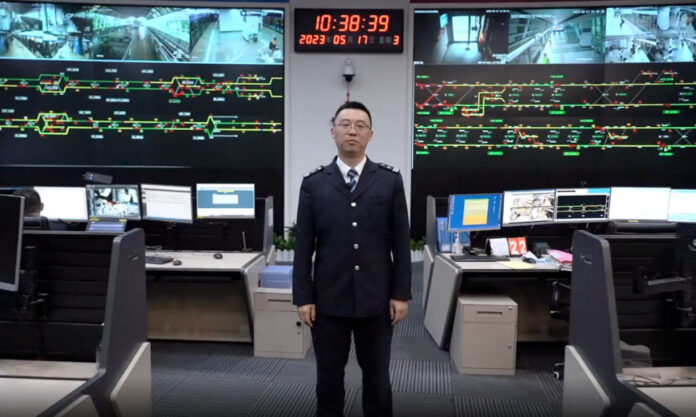Commuters in Nanjing, or anyone with an interest in our City’s Metro system, now have the opportunity to take a fascinating glimpse at the inner workings of the network, from its beating heart, the control room, in a video recently released by the Nanjing Metro.
The video, which was filmed on 17 May and released on 14 July via the Nanjing Metro official WeChat account, is one in a series that takes viewers for a behind-the-scenes look at much that goes into keeping the network running day in day out.
Safety is a recurring theme in the videos, helping to provide the travelling public with greater peace of mind while using the network.
In the Metro’s main control rooms, that means staff hand in their phones as they punch in everyday. Just as well; with hundreds of trains running on the network at the same time, the traffic dispatchers, as they are known, cannot for a moment be distracted.
As for their day to day duties, during the day shift, the dispatchers communicate with train drivers in real time and finesse the timing of services, telling a driver to prolong their stop at Xinjiekou by 20 seconds, for example.
As for the overnight shift, dispatchers spend their time communicating with the crews spending their nights checking the lines to ensure the network can operate to perfection the next day. Lots more safety.
There there comes the communication employed between the dispatchers and those out on the network doing the grunt of the work. As is well known, members of the military, police, airline pilots and others working in the aviation and travel industry commonly use a dedicated alphabet in their communications; “A” becomes “Alpha”, “B” is “Bravo”, “C” is “Charlie” and so on.
As for numerals, “three” is pronounced “tree”, “five” is “fife” and “nine” is “niner”.
But the Nanjing Metro does not use the International Radiotelephony Spelling Alphabet; they adopt their own, based on the Chinese standards for unambiguity in the spoken form of numerals.
Therein, “ling” (0; 零) is pronounced “dong” (hole; 洞), “yi” (1; 一) becomes “yao” (tiny; 幺), “er” (2; 二) is “liang” (both; 两) and “qi” (7; 七) is “guai” (to turn; 拐).
But no matter Chinese or English, the goals of such a phonetic alphabets are one and the same. In Nanjing, that lowers the chances of misunderstandings and helps to make our Metro a safe place to travel at all times.
The video can be seen via this link.









